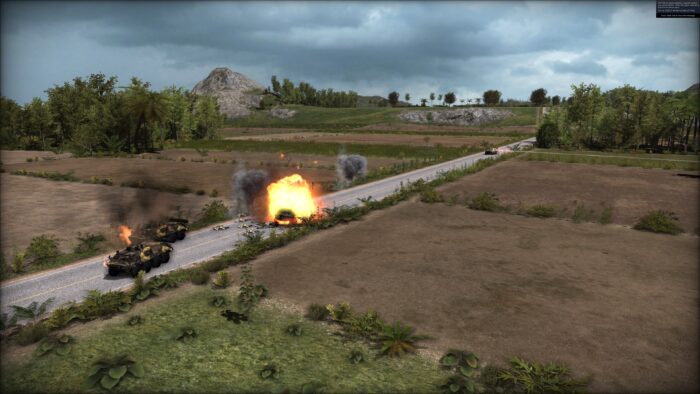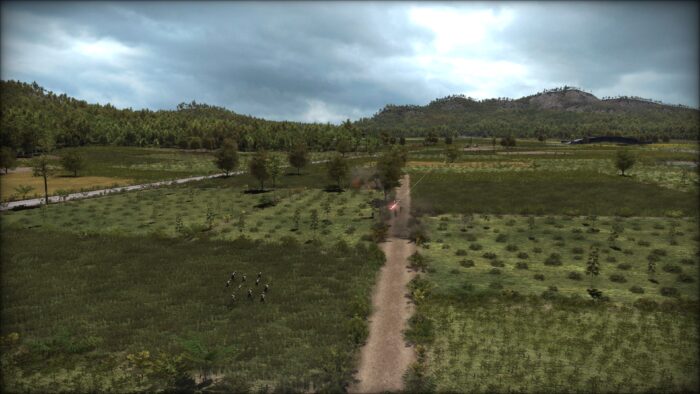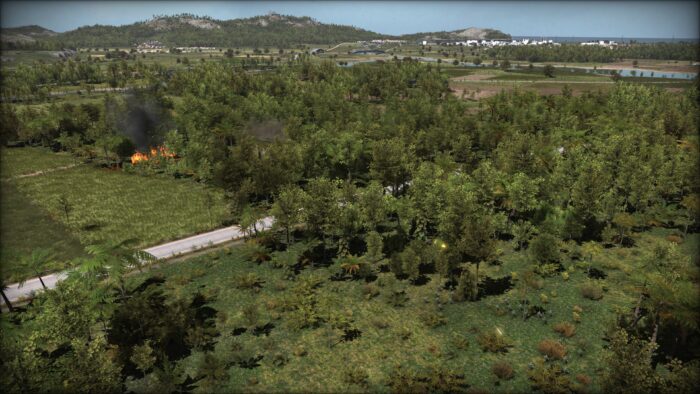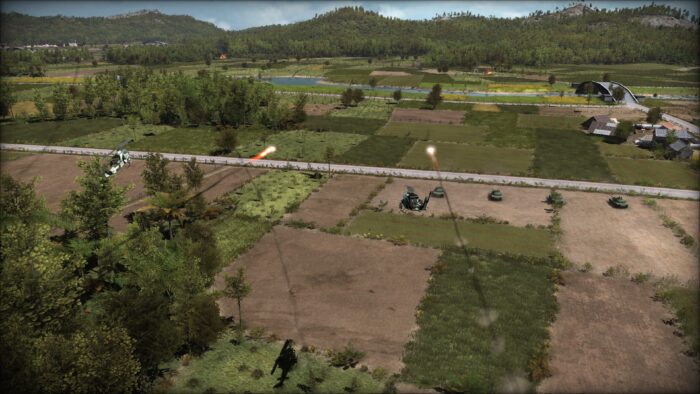Wargame: Red Dragon! Hell in a very small place
When I was a little boy in the early 1980s, I’d play with boxes full of toy soldiers, tanks, airplanes and helicopters. The living room floor would turn into the North German Plain or the jungles of Vietnam. Squadrons of fighters would streak through the kitchen and merge into deadly combat somewhere in the airspace above the dining room table. The family room would be forcibly occupied in order to prepare defensive lines that would preserve democracy and the American way until my mom called me away for dinner. In an era when there were no computers in the home for the most part and electronic gaming was in its infancy, the only thing standing between freedom and communist global insurgency was me and my plastic Marine Corps. My toy soldiers are all gone now, so when I want to play out some Cold War fantasy I power up my computer and launch one of Eugen System’s excellent games in the Wargame series. Lately, this has been Red Dragon.
By: Craig Handler
For this scenario, I looked for a small 1v1 map with a good mix of jungles, fields, rice paddies, hills and villages. I built a strong deck representing a strong mixed U.S. battlegroup and faced off against a random REDFOR deck. It turned out to be a mix of Soviet and North Korean troops with heavy anti-air and mechanized elements. Fortunately, heavy armor was limited to mostly outdated T-55 and T-64 type MBTs.
I’m going to skip the details on the initial deployment and slow roll toward contact and just get right into the action. My pre-deployment strategy invested heavily in a couple of platoons of M1A1s and mechanized cavalry riding in M2 Bradly IFVs. With these strong armored forces, I quickly moved forward in order to seize key defensive terrain that could form an anchor for future thrusts deeper into the map. It didn’t take long for a platoon of M1A1s to make contact with probing Soviet mechanized infantry on the west/central section of the map.
Things were quiet on the eastern flank, so Air Cavalry scouts were called in to reconnoiter the sector.
Back in the center, things are really heating up at the FLOT with the Russians pouring mechanized and armored reinforcements into the fray. Here, a few platoons of concealed infantry open up on advancing Soviet troops.
The ambush seems to blunt the Soviet advance, leaving an opening for some vertical envelopment. Bring on the Air Cavalry!
A flight of four UH-60s loaded with infantry fly into the combat zone hugging the earth and using a hill to cover their approach.
The first section of blackhawks clears the hill in preparation for landing and is immediately taken under fire by missiles launched from an 9k35 Strela-10.
The missiles are accurate and deadly, taking down two fully loaded helos, the first blue casualties of the battle.
Fortunately, the second section has the chance to alter their approach and stick behind the hill, preventing further disaster. Both remaining helos take some damage, but they are able to unload their troops and egress to safety.
Meanwhile, as the reduced squad of airborne troops advances on the Russian flank, additional armor and IFVs advance forward in order to secure the central base of the map and push the communists back. The firepower is overwhelming and a platoon of T-64s is destroyed.
With the main Soviet thrust shattered in the center, the enemy appears to shift its efforts and remaining strength to the eastern flank. A mixed force of Russian and Korean troops make a push for a U.S. occupied town.
Fortunately, a platoon of M2s with mounted infantry is in good position to take the advancing enemy under fire.
The M2s hold back due to the uncertainty caused by the heavy jungle surrounding the highway. The infantry advances to secure the route, but is quickly taken under fire by hidden enemy troops.
The volume of enemy fire is extremely heavy and additional enemy forces are seen advancing on the area. The small platoon of American infantry is getting pinned and flanked by a larger formation of DPRK infantry. Here is an image with the HUD enabled in order to demonstrate the deteriorating tactical situation.
The U.S. platoon is literally fighting for its life.
There is so much small arms fire that tracers have set several small fires throughout the dense section of jungle.
The U.S. infantry is cornered and about to be overrun. Their platoon leader makes a desperate call for a danger close airstrike. Two Navy A-6 intruders on station respond with napalm.
The air strike is right on target!
More gelatinous fire rains down.
None of the North Koreans survive the aerial onslaught.
Although enemy forces are continuing their advance, the jungle is cleared and the immediate threat is temporarily halted. The survivors of the American platoon are able to pull back.
With the situation somewhat stabilized, more troops are airlifted in, and survivors of the trapped platoon are medevaced out of dodge.
The area is still hot, however, so F-16C Fighting Falcons are called in on gun runs to strafe motorized forces moving down the highway.
Unfortunately, the enemy brought a tremendous amount of AAA and SAMs to the fight and one of the Falcons is engaged by a Strela. Sadly, the F-16 is shot down.
The wingman of the downed Falcon gets revenge, and is able to unload cluster bomblets over the enemy that still hasn’t realized that it has lost the battle.
A flight of U.S. Marine Cobras is also called in to lend a helping hand.
The Cobras, with the assistance of advancing armor, shred whatever fight was left in the enemy force. Look at all that brass!
The battle ended to the sound of M197 20mm 3-barrelled Gatling cannons. The communists have had enough with their surviving units exiting the field to fight another day.
Chat about it below, or in our forums, or hit our FaceBook page >>


































